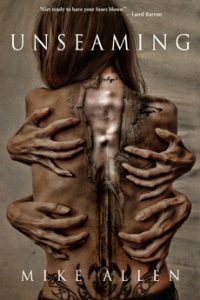Genres of Sequels and Series
Of all original novels published each year, how many are sequels or books in series, and how many are independent, original, stand-alones? Take a guess before reading further.
For some time now I’ve been toying around with maintaining tallies of how many new books in our field are published each year that are in each subgenre (SF, fantasy, or horror), and more interestingly, how many are stand-alone singletons as opposed to those that are parts of series, or sequels to earlier books. As I compile the online “New Books” listings every week or so, I am numbed at times by how many books are Xth volumes in seemingly endless series. It seems as if the majority of original books in SF/F/H are sequels and series, not independent stand-alones. This seems especially true in fantasy… at least in ‘urban’ fantasy.
I started tabulating novels published last year, 2009, but have never finished — the task required reviewing records of some 400 or 500 novels published that year in my database and setting appropriate fields, which sometimes could be derived straightforwardly from the descriptions I had already written for online posting, but which at other times required me to go out to Amazon.com or look up a Locus review in order to glean enough from their descriptions to categorize them. I still haven’t finished all those, but more recently I did spend an hour and did the categorization for the more modest number of 2010 novels published so far this year, and have set up an initial page with the results.
There’s a little table of subtotals at the top.
Perhaps it’s no surprise to anyone — but there are more fantasy novels published than SF novels! More than twice as many, in fact. Also, unsurprisingly, confirming my impression, the majority of the fantasy novels, some 80% of them, are books in series.
I should stress of course that I don’t pretend the lists on these directory pages are comprehensive — there are likely dozens, if not hundreds, of titles that I haven’t seen, or have noticed but not bothered to compile. (Locus Magazine does try to do a comprehensive job of this, and they do update running counts of new books published each month, but only categorize them by type of book — novel, collection, anthology, etc. — not by genre, or standalone/singleton.) Still, the titles I do overlook, deliberately or not, tend to be the fantasy and horror titles, since those are more apt to be marketed as generically vague. As I’ve mentioned on the weekly bestseller pages, there are dozens of romance novels with possible fantasy elements published every year, many selling quite well, which I don’t bother to compile (and I suspect Locus Mag doesn’t track all of them down either). And the whole field of YA fiction, where every other novels seems to have some fantastic element, is another area that I admit isn’t covered very well on the website. There is only so much time.
Thus, my little tally most likely underestimates the dominance of fantasy series, if anything, and in turn the number of genre books that are parts of series.
So what does this mean?, is it significant?, or already obvious to everyone and hardly worth mentioning?
One thought I have is that this shows how the sf/f/h genres, moreso than ‘literary’ or other genre fiction, are analogous to film and TV, where the most popular items tends to be sequels and series. Conversely, the films that are not sequels — and the novels that are not sequels — are more likely to attract critical attention and awards. TV, on the other hand, tends to reflect the gravitation in pop culture, including sf/f/h, away from singleton stories to ongoing stories of scope and complexity that was impossible before the age of DVD sets — and online booksellers that made acquiring past volumes of book series so easy.
A corollary here is that, for those readers of sf/f/h (including most reviewers, I might guess) who are less interested in repeats of familiar material and more interested in what’s new and completely original, is that they have a lot less to read than it might appear, given how many hundreds of original books are published each year. This is a *good* thing — ignore all the series and sequels, and it’s not impossible to keep up with what’s new.
The new page isn’t quite fully automated, but it will be shortly, and will be updated regularly (once a week or so) with all the other directory pages. And I may break the tallies down further, by subgenre varieties within each sf/f/h grouping.





When I buy a book and find it's the *nth* volume in some open-ended series, I feel burned. A lot of action in later books doesn't make much sense unless you've read the others…and, often, the tone from one end of the series to the other has changed.
As a (would-be) writer, I've tried to make everything I've written stand up on its own, so nobody *has* to read anything else…and as a reader, I try to stay clear of getting hooked on something I have to spend more money on.
Good luck in your tracking project…
Very good ideas here! I favor standalones too, to write & to read.
Gregory Benford
That audiences want "the same only different" is a fact of life in the arts, and in the commercial end of things, it's reinforced by all the market forces you would think apply. The mystery field is just as dominated by series books, and I wonder whether it's possible for a new writer to break in without a series framework or character and an outline for the second and third books (contingent on the first one selling well enough). In the mystery, as in some fantasy and SF, the template series is the big temptation–the rough equivalent of episodic TV in which nothing ever really can change except for the plot twists.
But the series doesn't have to be a bad thing in SF, where the "different" part of the-same-only-different can mean the exploration of a world or the unfolding of (or digging into) the implications of initial givens. This latter seems to be what Nancy Kress did when "Beggars in Spain" grew from a novella to a sequence of novels–every extension represented a re-examination and elaboration of the issues, until in Beggars Ride she takes the whole thing apart and asks the generating question again.
Then there are the settings that beg to be explored–Neal Asher is doing that his Polity books something like what Niven has been doing with Known Space for decades. And I wonder whether Karl Schroeder saw himself writing quite so much about Virga and Artificial Nature when he started out.
When I write up my annual wrap-up essay for Locus, I always note the number of series items I covered, and it seems to have increased over the years. Of course, part of that is my impulse to follow up on books I've enjoyed–only a little bit of that is obsessive-compulsive behavior. I really do enjoy the series and cycles and trilogies and returns-to and in-the-world-ofs and have since I started reading SF in 1955. If you're going to build worlds, why not make them permanent and roomy enough to revisit?
The second book listed in Fantasy Novels, Stand-alones, Charlton, Blake • Spellwright • (Tor, Feb) is the first in a trilogy. See http://www.blakecharlton.com/ficton/
I wonder how many of the standalones will become the first in a series? For example, you would have to reclassify A Fire Upon the Deep once A Deepness in the Sky came out.
FYI, The Extra is the first book of three, although it's not packaged that way.
I'm not sure that it's a matter of what audiences want, so much as it's easier for the marketing department to predict how the nth volume in a series will do by extrapolating the curve of the previous entries. Whereas a stand-alone title is more of a dark horse, even if the author has a following.
The modern corporate model is heavily weighted to predictability of return on investment (P&L), and reducing risk enhances that predictability. If readers were only five per cent more likely to buy a series title instead of a familiar author's stand-alone, that would be enough to push the industry in that direction.
The Extra is the first of three, Mark.